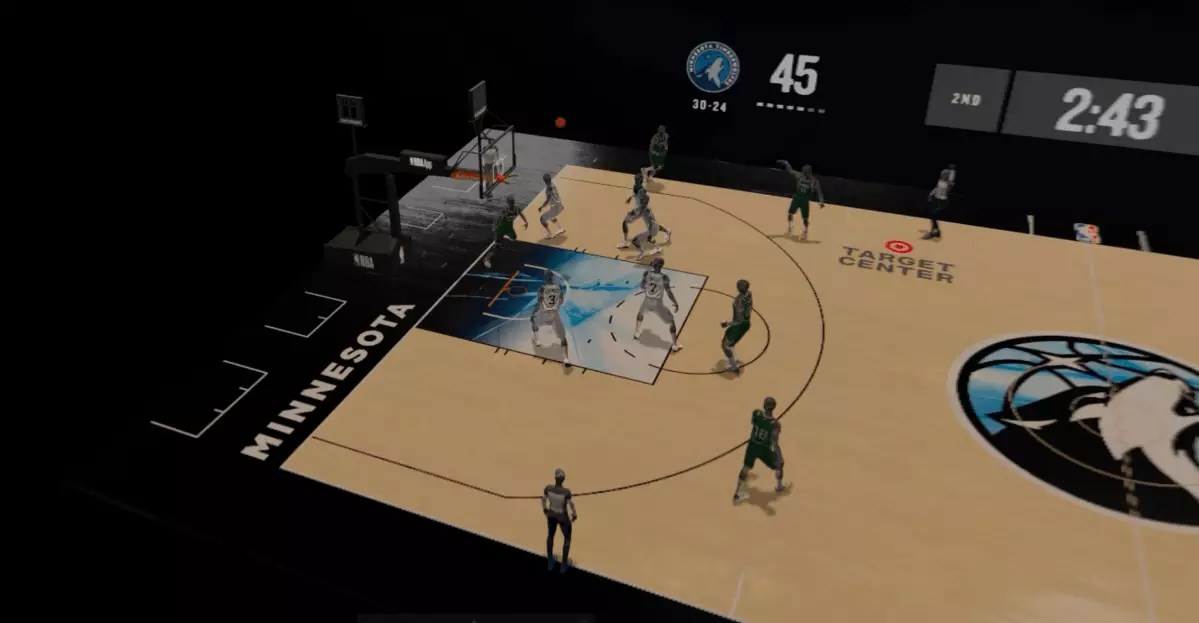In the ever-evolving landscape of sports entertainment, the NBA has once again made headlines by introducing a captivating new feature within its NBA League Pass—Tabletop, a mixed reality experience set to transform how we engage with basketball games. This innovative move signals not only a leap in technology but also a shift in how fans experience live sports from the comfort of their homes. Let’s take a closer look at the implications of this feature and what it means for the future of spectator sports.
The introduction of the Tabletop feature via the NBA’s Vision Pro app marks a significant milestone in the realm of augmented reality (AR) applied to sports. Available exclusively to NBA League Pass subscribers, this feature allows fans to place a 3D rendering of a basketball court in their personal space, synchronizing with live games. Notably, digital avatars of actual NBA players navigate the court, mimicking real-time actions such as passing and shooting. This not only enhances the viewing experience but also brings an unparalleled level of interactivity that has previously been absent in traditional broadcasts.
From my observations, the implementation of this technology is both sophisticated and engaging. The avatars, while uniform in their robotic design, can be easily identified by the colors of their jerseys, as well as the names and numbers displayed above them when they are in possession of the ball. This level of detail lends itself well to immersive viewing, allowing fans to remain connected to the gameplay. Furthermore, the ability of this AR feature to work seamlessly for local games that might not otherwise allow video streaming broadens its appeal and functionality.
Synchronization Challenges and User Experience
Despite the innovative design, users have reported experiencing a slight delay—up to 45 seconds—between the visual display of the live action and the audio commentary. Fortunately, adjustments can be made within the app to sync audio and visual feeds more effectively. This flexibility between audio and visuals is a crucial aspect of the user experience, as sports fans heavily rely on real-time commentary to fully appreciate the dynamics of the game. It remains to be seen how the NBA will continue to refine this feature to enhance user satisfaction further.
Some users, like Justin Ryan, have reported improved synchronization by utilizing the embedded toolbar. However, the feature’s limitation where it currently cannot be used for out-of-market games when streamed still underscores some restrictions in accessing the full breadth of the NBA experience through this platform. Sports are dynamic, and ensuring that viewers can consistently enjoy a synchronized experience across different game formats will be key in maintaining user engagement.
A Closer Comparison to Previous Innovations
Tabletop isn’t the NBA’s first foray into augmented reality. The technology draws parallels to features offered by other sports leagues, notably the Lapz app used for Formula 1 racing. Although that feature faced its demise under the pressure from the Formula 1 organization, its initial premise of elevating spectator experience mirrors what the NBA hopes to achieve with Tabletop. The inadvertent demise of such innovations underscores the challenges sports leagues face in adopting new technologies while ensuring the integrity of their live broadcast rights.
The NBA’s commitment to incorporating AR technologies is evident, not only in real-time gaming but also in utilizing 3D scans of personalities associated with the league. The previous demonstrations from NBA Commissioner Adam Silver showcased how these technologies could replace live clips with virtual avatars, further enriching the narrative experience for fans. This ambition for progression demonstrates the NBA’s willingness to take risks and experiment, something that may set it apart in a competitive sports market.
As we look ahead, the implications of these developments extend far beyond just enhanced viewing experiences. The integration of immersive technologies like Tabletop suggests a broader trend where sports leagues can leverage digital platforms to engage younger audiences. They are increasingly gravitating towards interactive and enriched experiences, prioritizing engagement over passive consumption.
The integration of AR and mixed-reality elements may signify an exciting new frontier in sports fandom. With fans able to experience games in new and compelling ways, and leagues embracing innovative technologies, the potential for transformation in sports entertainment is immense. As the NBA rolls out features like Tabletop, stay tuned to see how these developments reshape our relationship with sports in the digital age.


Leave a Reply